| September 1, 2009
The Great North American
Loudspeaker Tour: YG Acoustics
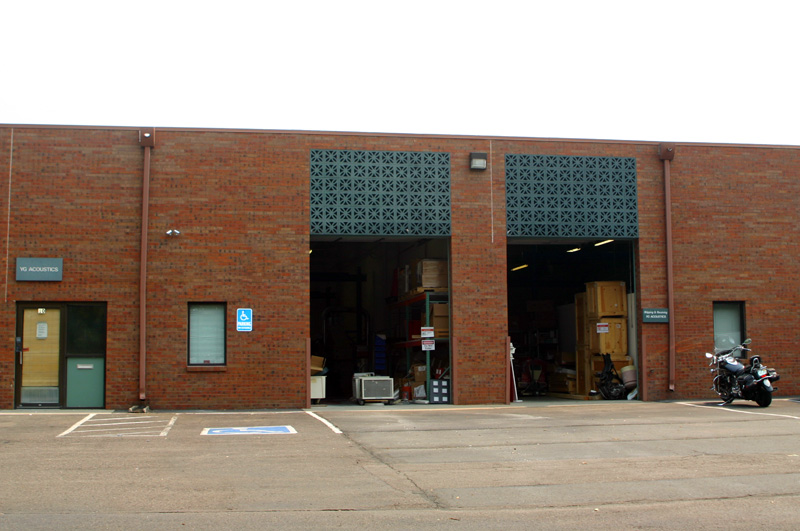
The entrance of the YG Acoustics factory in Arvada, Colorado, USA.
Main designer: Yoav Geva
Product auditioned: Anat Reference II
Professional ($107,000 USD per pair)
Associated Equipment
- Amplifiers: Krell FPB-400cx (two)
- Preamplifier: Krell Evolution 202
- Sources: dCS Scarlatti SACD/CD transport, Scarlatti
Master Clock, Scarlatti DAC
- Cables: Kimber Kable Select
Setup details: The Anat Reference II Professional
speakers were biamped (Main Modules only; the woofer sections are self-powered) and
toed-in toward the listening position 12.5 degrees.
Listening room: YG Acoustics’ listening room is
a custom-built space constructed inside the walls of YGA’s factory. The room is
25’L x 20’W x 13’H. Acoustic treatment products, which were numerous, were
by the German firm Fast Audio, and included both bass traps and wall panels. A unique
feature of the room is a crane (yes, a crane) that facilitates the speedy moving of large
speakers in and out of position for A/B listening comparisons.
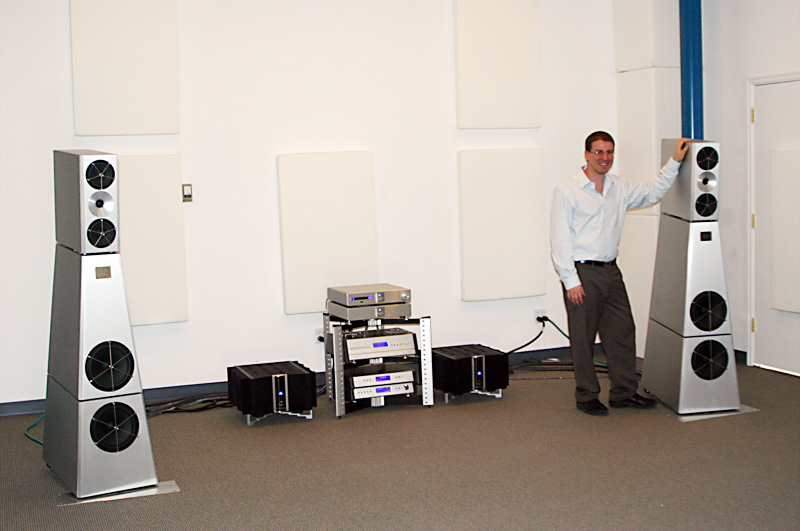
President and chief designer Yoav Geva in his factory listening room with
the Anat Reference II Professional.
Yoav Geva’s vision for the Anat Reference II
Professional: The Anat Reference II Professional should be a "simple tool";
that is, the "output equals the input." Geva "does not want to change the
musician’s intent" with his loudspeakers. His design goals include no phase
shift between drivers, ultraflat frequency response, smooth off-axis dispersion, lack of
cabinet resonance, and minimal mechanical loss from the driver/cabinet interface. Geva
states that distortion is "not as important as some people make it out to be."
According to Yoav Geva, the Anat Reference II
Professional is unlike other loudspeakers due to: The proprietary loudspeaker-design
software Geva developed to optimize both phase and frequency response. Unlike many
speakers, the Anat Reference II Professional does not "roll off the highs or have a
recessed midrange."
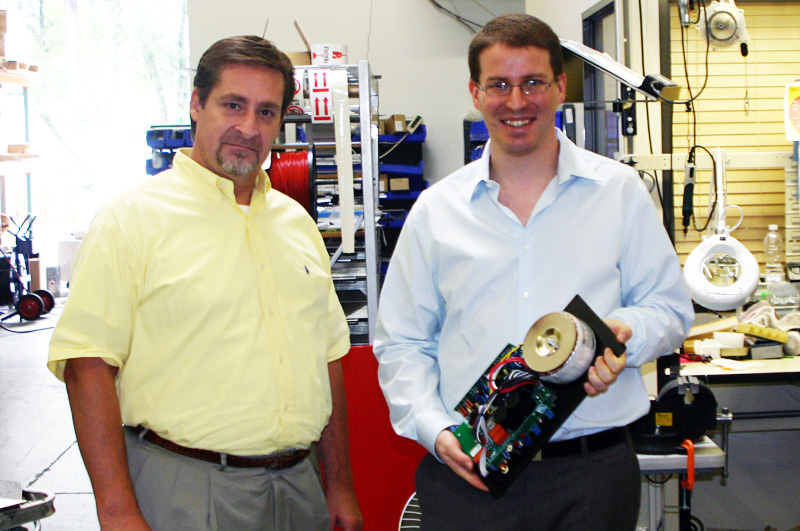
Dick Diamond (left) and Yoav Geva with an amplifier module for a YGA Kipod
loudspeaker.
Listening impressions
The 90-minute listening session was hosted by YGA’s
head of sales, Dick Diamond. Musical passages ranged from familiar cuts from the Fairfield
Four’s I Couldn’t Hear Nobody Pray (CD, Warner Bros. 46698) and Neil
Young’s Live at Massey Hall 1971 (CD, Reprise/WEA 43328) to tracks from
Kathleen Battle and Chris Jones, among many others.
The first word that came to mind as notes began to pour
forth from the Anat Reference II Professionals was vivid. These speakers
didn’t sound bleached or thin, as do some other speakers that are also tilted toward
detail and speed. Instead, the Anats were adept at revealing the wide array of tonal
colors in all types of music. The analogy that came to mind was how a high-definition
television reveals greater resolution as well as crisper, more vivid colors -- the greater
resolution doesn’t sacrifice the color rendering but, on the contrary, enhances it.
So it was with the Anats. The Fairfield Four’s "These Bones" sounded dense
with information -- the singers’ various vocal pitches were cleanly and (here’s
that word again) vividly displayed across a wide, information-packed soundstage.
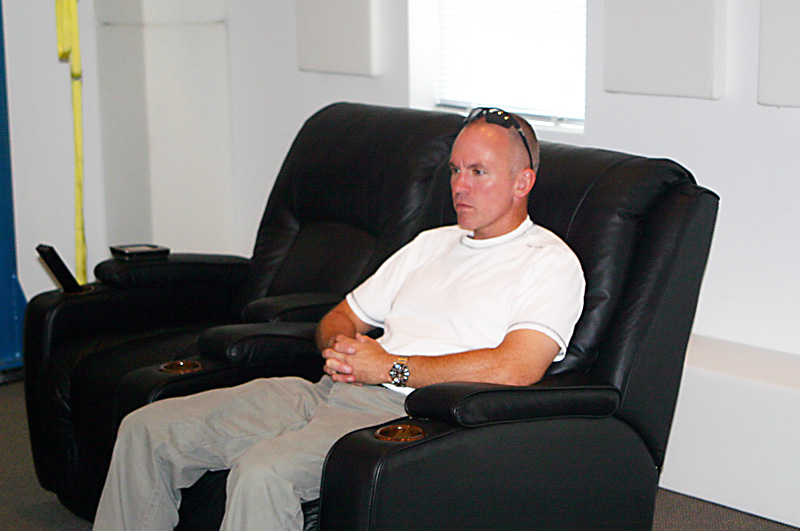
Jeff Fritz in the listening chair.
Yet even as the system was presenting all this information,
the sound was never dry or fatiguing -- there was no overload of the room, nor did I get
the sense that the sound was being forced in any way. The Anat Reference II Professional
was capable of walking two fine lines at once: between speed and precision, and between
presence and subtlety. The Neil Young tracks were fine examples of this: such was the
Anats’ combination of clarity, speed, and agility that the acoustic guitar had a
quality of presence that made it not unlike a live guitar being played in the YGA
listening room.
The other overriding characteristics I noted were a high
overall level of transparency, and pinpoint imaging within the soundstage. The singers on
"These Bones" were spread in precise increments from left to right, making it a
snap to map the soundstage with infinitesimal precision. The ultraclear rendering meant
that the soundstage was not veiled or obscured by artifacts.
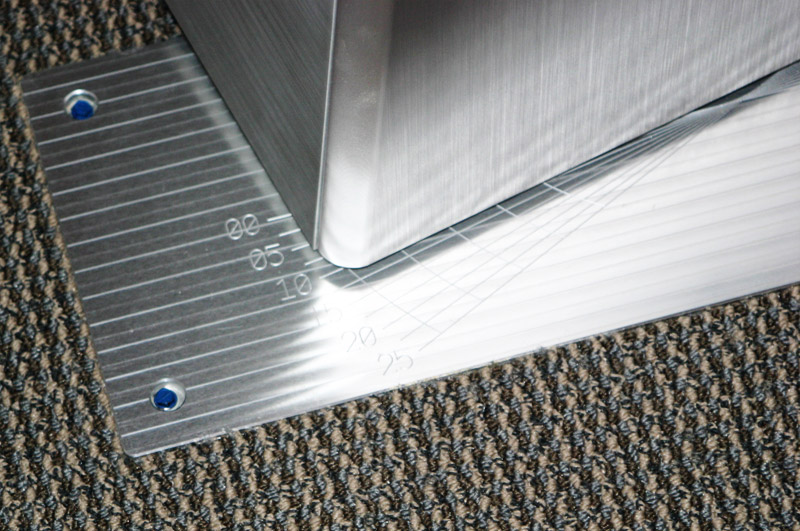
YGA uses a precise measuring tool to get the angle of the speakers just right.
Company impressions
YG Acoustics’ philosophy is very easy to sum up: Leave
the art to the artists who make the music. These loudspeakers are about science.
Taken in total, loudspeaker design is more complex than
such phrases make it sound, simply because the scientific disciplines involved are quite
complicated. The cornerstones of YGA’s design ethos -- whether it’s the software
that Yoav Geva developed for his loudspeaker designs, or the ultra-expensive Portatec CNC
machine used to cut the aluminum panels of the various speaker models, or the accuracy of
their reproduction and manufacture, or YGA’s knowledge of why things sound as they do
-- show up in everything they do.
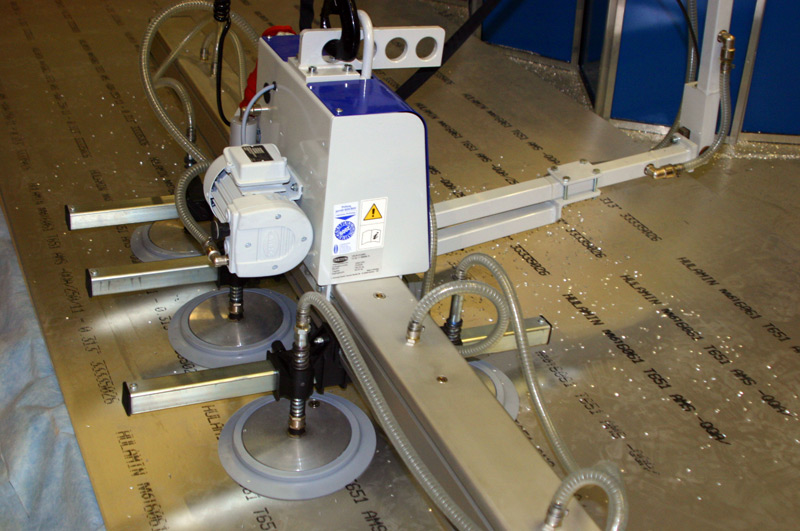
The machining of the aluminum panels for all YGA speakers is done in-house.
Conclusion
It’s counterintuitive, I know, but after my listening
session with the Anat Reference II Professional, I can attest to it: Cold, hard science,
devoid of any skewed artistic whims, can result in a product that elicits raw emotion from
a listener. The sound of the YG Acoustics loudspeakers is wholly matched by the precise
processes used in their design and manufacture -- just as Yoav Geva intended.
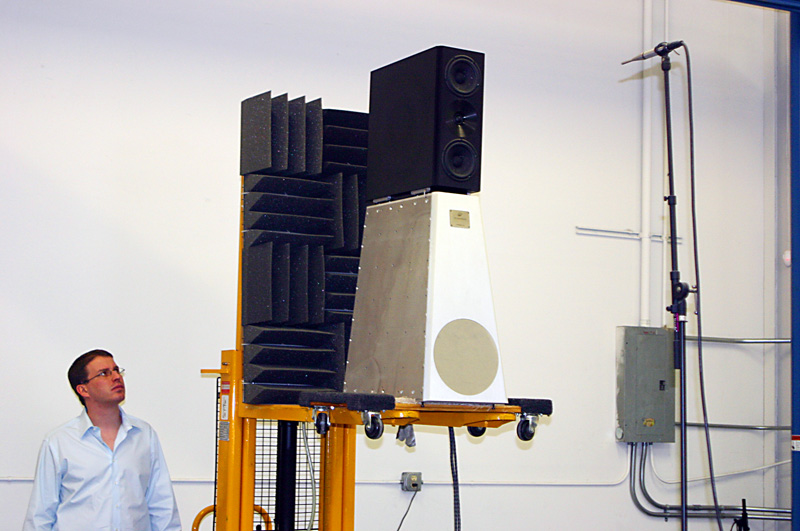
Yoav Geva takes measurements very, very seriously.
. . . Jeff Fritz
jeff@ultraaudio.com
|